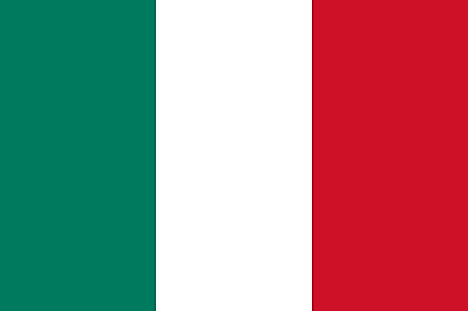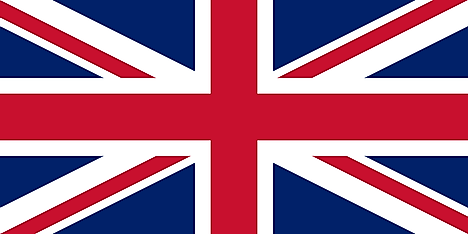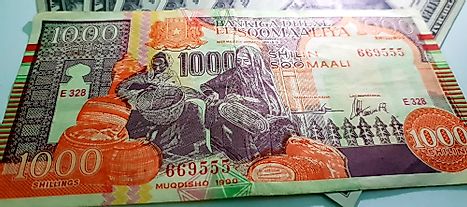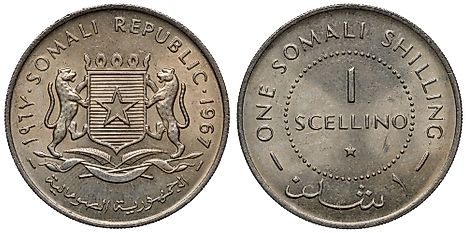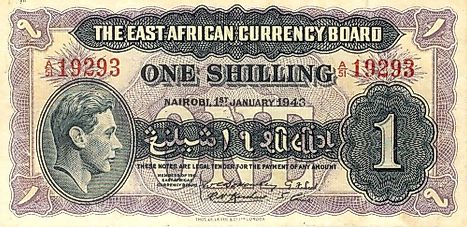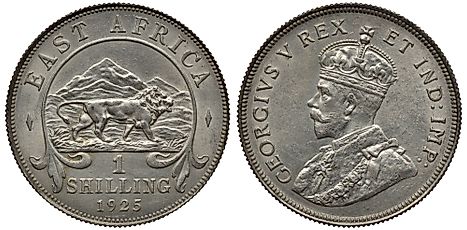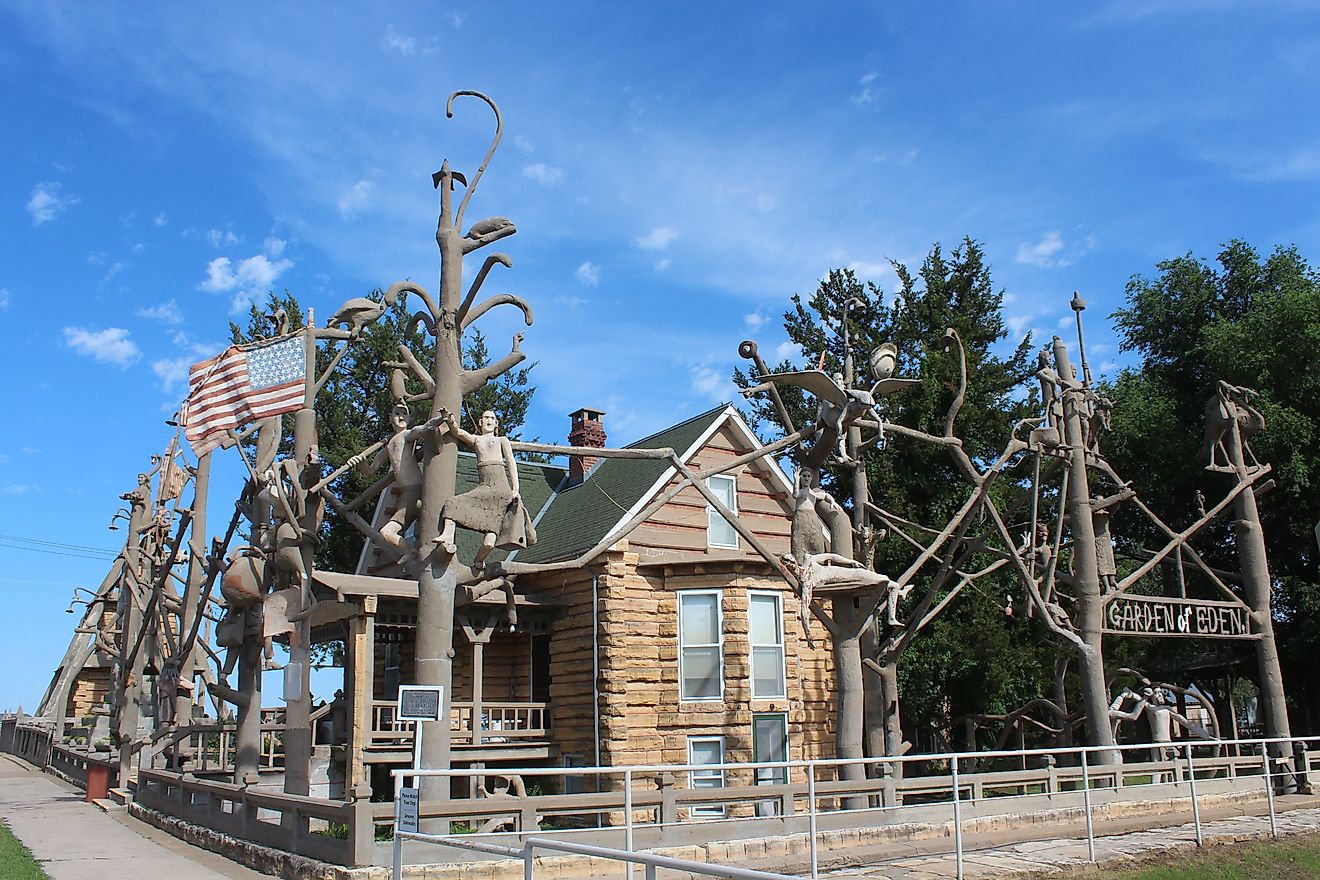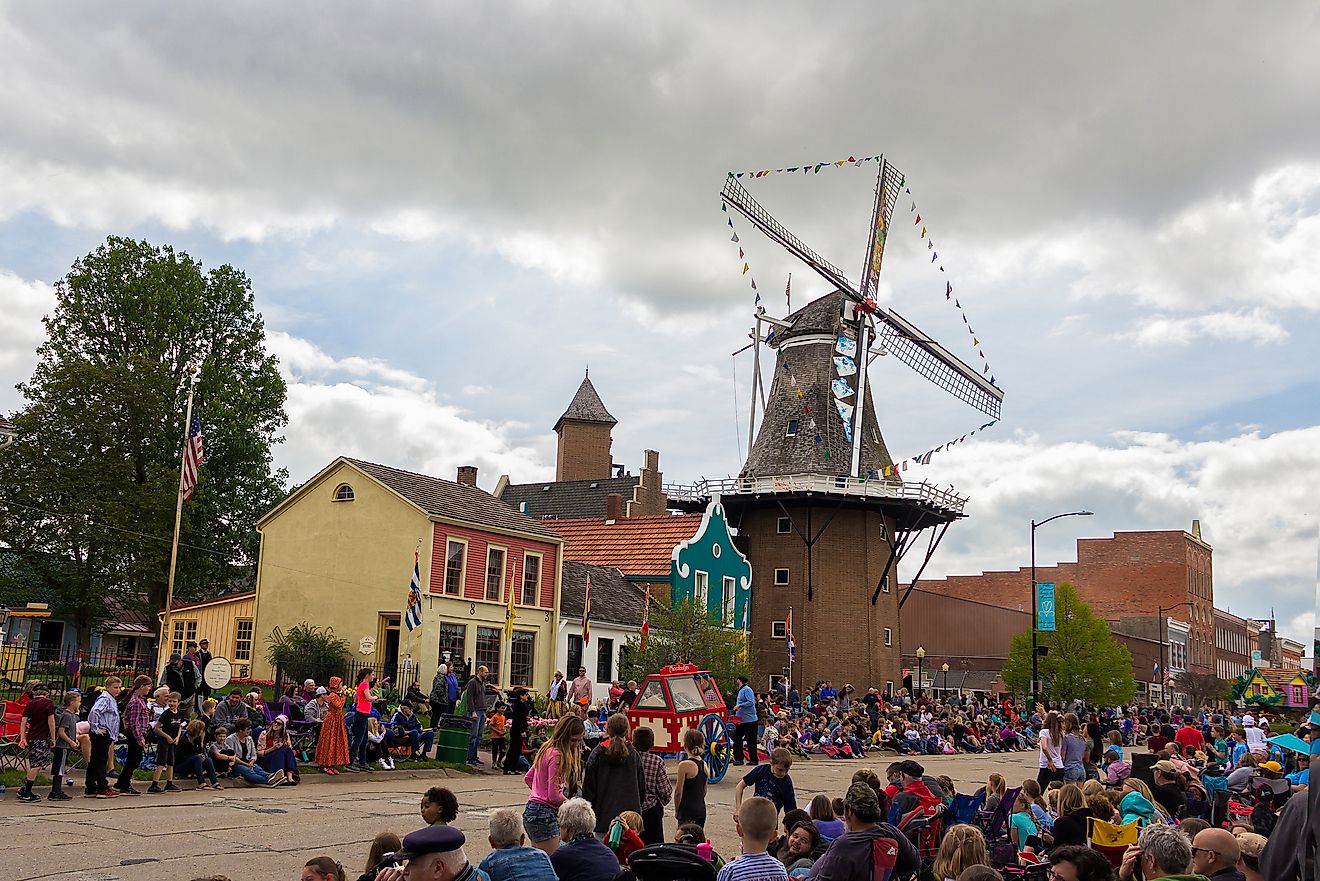Flags, Symbols & Currency of Somalia
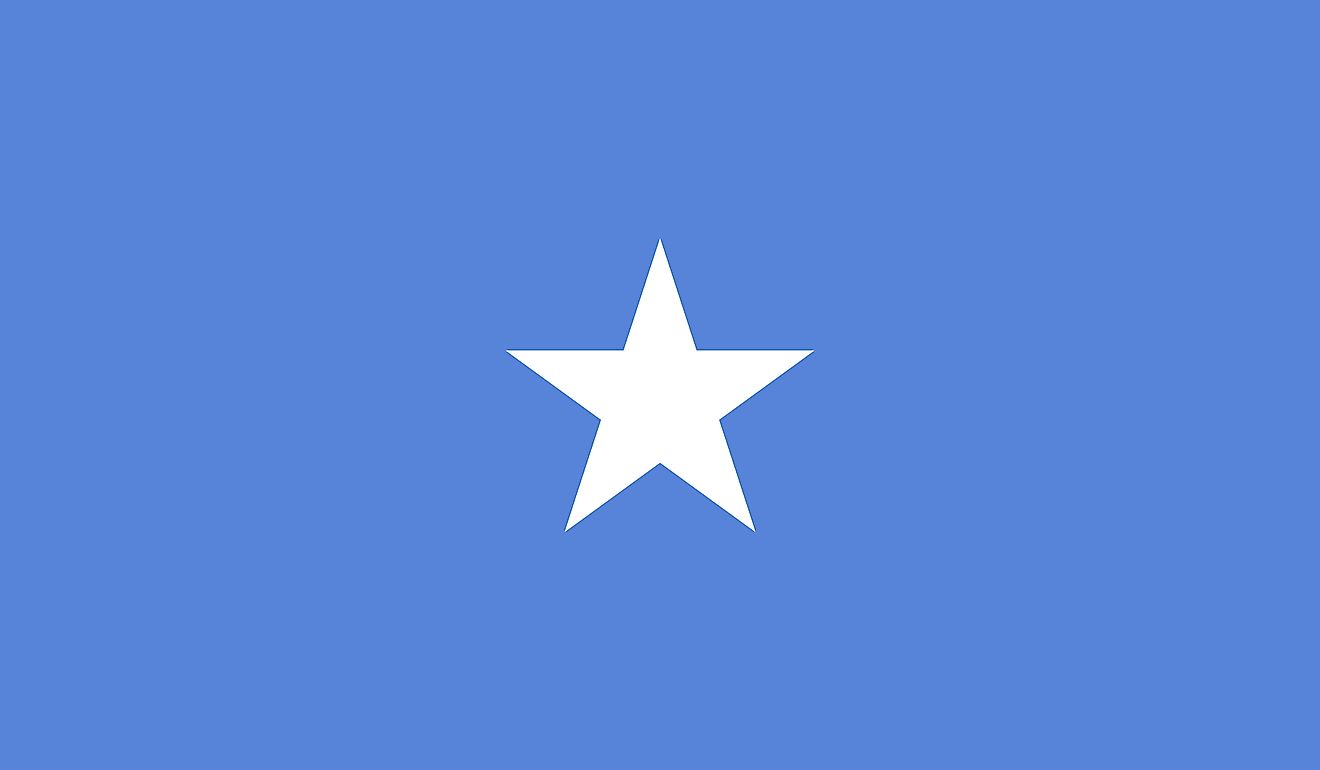
The National Flag of Somalia was officially adopted on October 12, 1954. The flag has been designed by a Somali scholar - Mohammed Awale Liban.
The National Flag of Somalia is rectangular shaped and features a light blue background with a large white five-pointed star ("Star of Unity") in the center. The blue color of the flag was initially influenced by the flag of the UN but today is said to denote the sky and the neighboring Indian Ocean, the Gulf of Aden, and the Guardafui Channel. The five points of the star represent the five regions in the horn of Africa that are inhabited by Somali people: the former British Somaliland and Italian Somaliland (which together make up Somalia), Djibouti, Ogaden (Ethiopia), and the North East Province (Kenya). The flag has a width-to-length ratio of 2:3.
History of The Flag of Somalia
In the late 19th century, the Italian and British empires captured parts of Somalia near the coast and formed the Italian Somaliland and British Somaliland. Although in the interior regions of Somalia, the Dervish State managed to put the foreign powers at bay, it ultimately yielded to British airpower in 1920. Italy also occupied large parts of the land but eventually, Italy also gave in to British power in the region in 1941. After Italy left Somalia, Italian Somaliland became a Trusteeship of the UN. The flag of Somalia was created in 1954 when a labor trade union of the Somali people elected a Somali scholar - Mohammed Awale Liban with the task. At this time, the country was preparing for independence and needed a national flag as its identity. Initially, the flag was used in Somaliland - a UN Trust Territory and the State of Somaliland. In 1960, an independent Somali Republic was formed by the union of Italian and British Somaliland. Finally, the flag became the national flag of the Somali Republic in 1960.
Symbols of Somalia
The National Coat of Arms of Somalia
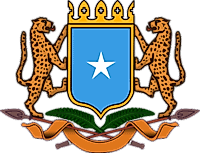
The current official National Coat of Arms of Somalia was adopted on October 10, 1956. It features two leopards/cheetahs supporting a shield. The shield is blue and has a golden frame and which bears a white five-pointed star of the national flag. Surmounting the shield is a decorative emblem containing five golden heads (with two laterals halved). Below the shield are two crossed lances and palm fronds wrapped in a white ribbon.
National Anthem
- Anthem Title: Qolobaa Calankeed ("Any Nation's Flag")
- Music Composer: Abdullahi Qarshe
- Lyricist: Abdullahi Qarshe
- Date of Adoption: August 1, 2012.
Qolobaa Calankeed ("Any Nation's Flag") is the national anthem of Somalia. The music of the anthem and the lyrics have been created by Abdullahi Qarshe. The anthem was officially adopted on August 1, 2012.
Qolobaa Calankeed (Somali)
Qolobaa calankeedu,
waa ceynoo,
Innaga keenu waa,
Cirkoo kale ee,
aan caadna lahaynoo,
Ee caashaqa ee.
Xidigyahay caddi waad,
Naa ciidamisee,
Carradaa kaligaa
aadiga u curad ee
cadceeda sideeda
la caan noqo eey
Cishadaad dhalataad calooshaydii
Sidii culaygii cidaad marisee
ha ku celin cawoy dhahe ee
"Any Nation's Flag"
Any nation’s flag, bears its own color
The sky (above us), does ours look like
Defects it has none; love it with candor
Oh you White Star, at your service we are
Superior you are, in any part of our land
Be famous oh Star, like the sun (of the far)
On the day you arose, our hearts you have
Purified with pureness, (Oh you our flag)
Lord may not dim you, pray we in this night
The detached part of, our forces of five
I beseech from God, their return you cause
This fate that wrote, for us to meet now
The Currency of Somalia is the Somali shilling
The current official currency of Somalia is the Somali shilling (Sh.So.). It is subdivided into 100 senti. The National Bank of Somalia (Banca Nazionale Somala) is responsible for regulating the circulation of the Somali shilling.
Coins
Initially, the East African shilling and the Italian somalo circulated together at par. In 1967, the Somali shilling coins were introduced in denominations of 5, 10, and 50 senti and 1 shilling. In 1976 the coins were remodeled and the name Somali Democratic Republic was added.
Banknotes
In 1962, the bank issued notes in denominations of 5, 10, 20, and 100 shillings. In 1983, the 50 shilling note was introduced, in 1989 the 500 shilling note was introduced, and the 1000 shilling note was introduced in 1990. In 1991 there was an unsuccessful attempt to reform the currency at a rate of 100 to 1. Currently, only the 1000 shillings note is in circulation.
Historical currencies of Somalia
The East African shilling was introduced to Somalia in 1921 when it was part of the British Somaliland protectorate. After independence, the Italian somalo was introduced to Italian Somaliland, which is a different state from Somalia. In 1962, the Somali shilling replaced the East African shilling at a par value, which was also equal to the somalo used in Italian Somaliland.
After the 1991 civil war began in Somalia, the currency value became unstable and uneven, which meant that the same currency had a different value in the different parts of the country. As a result, the Central Bank of Somalia closed its operations, and there was the emergence of other currencies, such as the Na shilling. Forged currencies began to circulate and led to the drop in the value of the Somali shilling to about $0.04 US dollars per 1000 Somali shillings. The US dollar became the accepted medium of exchange for large transactions. After the establishment of the Transitional Federal Government, the Central Bank of Somalia was revived and reassumed the role of formulating and implementing monetary policies. Boosted by improved security and the return of investors, the Somali shilling gained strength against the US dollar, and by 2014 it had risen by 60% against the USD.
